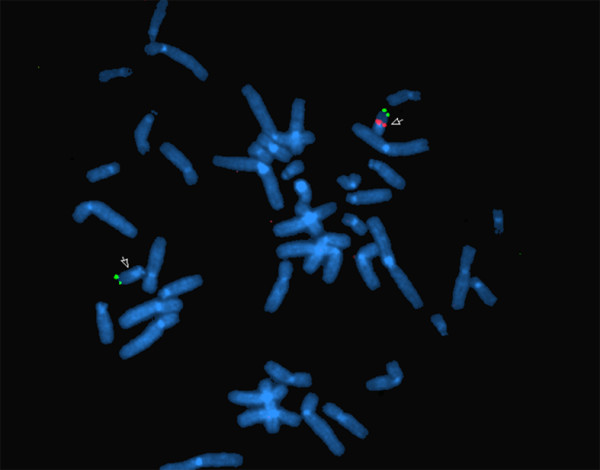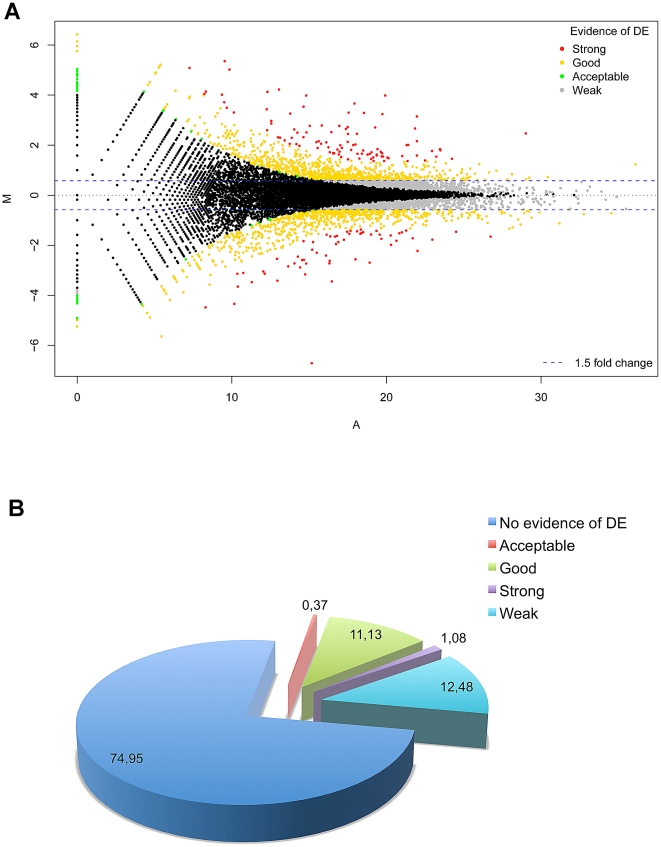User:Z3288827: Difference between revisions
No edit summary |
No edit summary |
||
| Line 31: | Line 31: | ||
== Week 3 online assessment == | == Week 3 online assessment == | ||
--[[User:Z3288827|Leonard Tiong]] 00:08, 17 August 2011 (EST) | |||
1. The maternal dietary supplement required for late neural development is folate. A lack of folate can result in failure of closure of the neural tube, leading to either spinal bifida (failure of the caudal end to close) or anencephaly (failure of the rostral end to close). | 1. The maternal dietary supplement required for late neural development is folate. A lack of folate can result in failure of closure of the neural tube, leading to either spinal bifida (failure of the caudal end to close) or anencephaly (failure of the rostral end to close). | ||
2. | 2. [[Image:FISH_for_DiGeorge_Syndrome.jpg]] | ||
== References == | == References == | ||
Revision as of 00:08, 17 August 2011
Lab 4 Online Assessment
- The allantois, identified in the placental cord, is continuous with what anatomical structure?
- Identify the 3 vascular shunts, and their location, in the embryonic circulation.
- Identify the Group project sub-section that you will be researching. (Add to project page and your individual assessment page)
--Z3288827 12:55, 28 July 2011 (EST)
Hello, I'm a student currently enrolled in the embryology course at UNSW. I'm really enjoying the course so far and think it's really great that we get to study the origins of where we came from, and plus the developing embryo looks cute! It's amazing to think that the entire human body forms so seamlessly from this series of events.
Identify the origin of In Vitro Fertilisation and the 2010 nobel prize winner associated with this technique.
In Vitro Fertilisation (IVF) was being explored in the 1950's by a scientist named Robert G. Edwards, who decided to investigate the possibility of fertilisation occurring outside of the body. Robert G. Edwards developed the theoretical technique and the media which would allow fertilisation to occur, and with the oocytes obtained by gynaecologist Patrick Steptoe, managed to develop the technique of IVF. Success was granted in 1969, when he first observed successful fertilisation within the test tube. Further success followed in 1977, with the birth of a healthy baby, Louise Brown, through the use of IVF.
Identify a recent paper on fertilisation and describe its key findings.
The article: "Obstetric outcome after in vitro fertilization with single or double embryo transfer", written by Sazonova A. et al, published in the journal of human reproduction in December 1, 2010. Generally, children that are born using the technique of in vitro fertilization (IVF) have a poorer outcome when compared to children born without assisted treatment. However, with a new technique, known as single embryo transfer (SET) in which a single blastocyst is implanted into the uterine wall, this poor outcome may be resolved. This paper observed the study of several subtypes of SET and double embryo transfer (DET) used amongst the general Swedish population. The most common complications were premature births and low birth-weights in the babies. The results indicated that any method of IVF, irregardless of whether SET or its variants, or DET were used, still had a higher rate of premature birthdays (<28 weeks) when compared with natural pregnancy.
Identify 2 congenital anomalies.
Congenital anomalies are defined as variations from the normal physical structure in a baby that are present at birth. They have a varying range of severity and have the potential to be lethal. A couple of examples of congenital anomalies include anencephaly, where the rostral end of the neural tube fails to develop in utero, resulting in the failure of the brain to develop. This particular condition is lethal. Another congenital anomaly is Sirenomelia, a rare and usually fatal condition in which the legs are formed together. The name of this condition indicates the physical appearance of the child, in which the legs are fused together, similar to that of a mermaids tail. There are usually severe complications associated with this condition, as the lower gastrointestinal system, bladder, and reproductive organs are also fused in a single tube. However, there have been a few instances where the baby is able to survive for a few years after birth.
--Mark Hill 09:38, 3 August 2011 (EST) All 3 questions need to be completed before Lab 2.
--z3288827 22:51, 9 August 2011 (EST)
Identify the ZP protein that spermatozoa binds to and how is this changed (altered) after fertilisation.
The ZP protein that the spermatozoa binds to is ZP3. This results in the release of an enzyme known as acrosin, which allows the sperm to penetrate through the oocyte cell membrane. Once the sperm has penetrated the cell membrane, this triggers two key events within the oocyte. Firstly, cortical granules, which are filled with enzymes and located just beneath the cell membrane, release their contents into the space located between the oocyte cell membrane and the zona pellucida. Secondly, a calcium wave spreads along the surface of the oocyte from the point of fertilisation. This changes the nature of the zona pellucida to other sperm, preventing multiple sperm from reaching the oocyte (polyspermy).
Review/Journal article - Duchenne Muscular Dystrophy
Hey guys, just found a review article that I thought was rather interesting, it's an animal model for Duchenne's muscular dystrophy[1]. I also found a primary journal article that discusses drug delivery for the condition [2]. I will print these articles for myself tonight and give them a quick read tomorrow and then paste a quick summary of the articles here just for you guys to consider :)
Week 3 online assessment
--Leonard Tiong 00:08, 17 August 2011 (EST) 1. The maternal dietary supplement required for late neural development is folate. A lack of folate can result in failure of closure of the neural tube, leading to either spinal bifida (failure of the caudal end to close) or anencephaly (failure of the rostral end to close).
References
[1] Nakamura A., Takeda S.; Mammalian Models of Duchenne Muscular Dystrophy: Pathological Characteristics and Therapeutic Applications, J. Biomedicine and Biotechnology Vol. 2011, Article ID 184393
[2] Yukihara et al; Effective Drug Delivery System for Duchenne Muscular Dystrophy Using Hybrid Liposomes Including Gentamicin along with Reduced Toxicity, J. Biol. Pharm. Bull, Volume 34, No. 5 pp. 712-716

